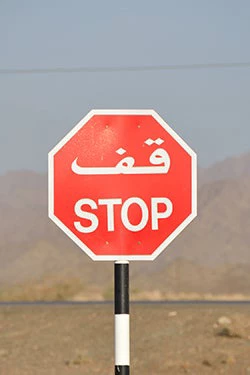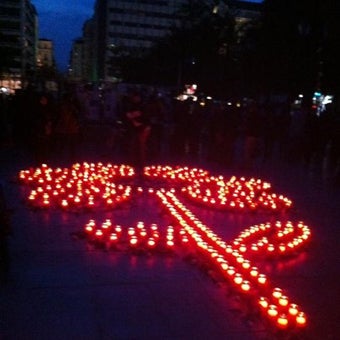 November has been a hectic month for the transport sector.
November has been a hectic month for the transport sector.
Whether in Buenos Aires or Abu Dhabi, or at the recent World Meeting of the International Road Federation in Riyadh, and the climate change meetings in Warsaw, the World Bank has contributed to critical discussions on how to best realize the transformative potential of the transport sector.
By now, probably nobody will question how essential the transport sector is for achieving the twin goals of ending extreme poverty and boosting income growth of the bottom 40% of the population in each country. And if we listen attentively to the Voices of the Poor—a study collecting the opinion of more than 60,000 poor people from 60 countries—the case for transport is evident: they all want roads.
This, of course, should not be surprising. Transport drives development. And mobility is a precondition for economic growth: mobility of people to access employment, education and health services; mobility of goods that make economies dynamic.
Realizing the sector’s full potential, however, requires making all modes of transport –by land, air, and sea- cleaner, affordable, and safer.
Safety is indeed a major issue in many developing countries. Roads can be a two-sided coin: as motorization increases we often see an appalling rise in road crashes. But it does not have to be that way.
So as we commemorate the World Day of Remembrance for Road Traffic Victims on November 17, it is important to understand how the Bank and other partners are trying to tackle the road safety challenge.
But first some facts. Some 1.3 million people die every year from road crashes around the world. This annual death rate is higher than from armed conflict, tuberculosis, or malaria.
Of those road deaths, almost 90 per cent occur in low and mid-income countries. In many of these countries, road fatality is the number one killer of youth (ages 15-29). In the long run, this tragic loss of young lives also results in major productivity losses, as well as average loss of between 3 and 5 per cent of GDP.
Second, the need for urgent action is clear. Road safety is a challenge across all regions of the world, but Arab countries, for example, have some of the worst road safety records and officials there tell us they are very concerned about its poverty-inducing effects and negative impact on growth.
The incidence of road crashes in the Middle East and North African (MENA) countries is rising at an alarming rate and is now the leading cause of death among young adults, according to recent public health reports. When comparing socio-economic indicators such as road crash fatality rates, healthy years of life lost due to crashes, and percentage of GDP lost, MENA countries now rank among some of the worst performers in the world.
Iran, Libya, Oman, and Saudi Arabia are among the 10 countries with the highest traffic fatality rates in the world. Road crashes cost up to 6 and 7% of GDP in Saudi Arabia and Oman respectively.
For the 5-14 and 15-29 age groups, road traffic injuries represent the largest socio-economic burden for the region. A lack of road safety has become a generational threat in MENA.
And third, it is possible for countries to make progress. The recent approval of Saudi Arabia’s National Road Safety Strategy signals the Kingdom’s commitment to tackling this problem. And Oman is also trying to address the issue through a multi-pronged strategy that focuses on education, prevention, and other interventions.

A candlelight vigil to remember road traffic victims in Athens, Greece
The World Bank-led Global Road Safety Facility has developed comprehensive solutions to address road safety’s various challenges, and has shown the importance of working with multiple public-private stakeholders in order to help stabilize or reduce road crashes around the world.
To better understand the cross-cutting impact of road fatalities and injuries on economic growth and poverty reduction, the Bank’s Road Safety Facility has just completed an analysis titled: Road Traffic Injuries: a Public Health Crisis in the Middle East and North Africa.
The analysis, done in collaboration with the regional transport team, examines why, in contrast to other high and middle-income countries, the increase in wealth among MENA countries in the last decades has not positively affected the road safety crisis.
The main findings confirm that economic progress alone does not automatically deliver better road safety performance, but transformational changes in the management of the road system along with ownership of the problem by multiple stakeholders are crucial to stabilize or reduce road crash fatalities and injuries.
The analysis also presents a framework for immediate interventions needed in the MENA region and the role that development organizations can play in supporting targeted policies, ensuring a sustainable funding stream, and building capacity to improve road safety policies and programs.
In the context of the UN Decade of Action for Road Safety launched in 2010, the World Bank is doing its utmost to help halve the expected death and injury rates on the roads of the developing world.
In the MENA region, this means saving some 380,000 lives during this decade and avoiding approximately 3.8 million serious injuries. With such stakes, inaction is not an option.
Now, that’s a message that countries around the world should keep in mind as we mark the Day of Remembrance for Road Traffic Victims.
Photo credit: Tristan Schmurr / European Federation of Road Traffic Victims


Join the Conversation